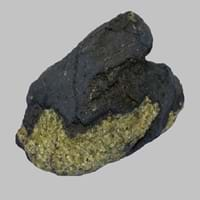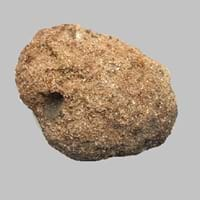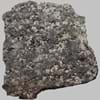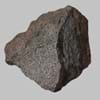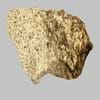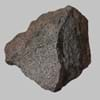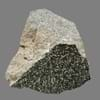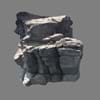Definition
Basanite is a black basaltic rock which mainly contains plagioclase, augite, olivine and nepheline and is formerly used as a touchstone
A yellow sandstone which is flexible when cut into thin strips
Discoverer
Unknown
Unknown
Etymology
From Latin basanites + -ite
From the name of a mountain range where it was found; Itacolumi mountain in Brazil
Class
Igneous Rocks
Sedimentary Rocks
Sub-Class
Durable Rock, Hard Rock
Durable Rock, Hard Rock
Group
Not Applicable
Not Applicable
Other Categories
Fine Grained Rock, Opaque Rock
Coarse Grained Rock, Fine Grained Rock, Opaque Rock
Texture
Aphanitic to Porphyritic
Clastic, Granular, Rough
Color
Black, Brown, Green, Grey, Red, White
Beige, Black, Brown, Colourless, Cream, Dark Brown, Green, Grey, Light Green, Light to Dark Grey, Pink, Red, White, Yellow
Durability
Durable
Durable
Appearance
Glassy or Pearly
Rough
Interior Uses
Decorative Aggregates, Homes
Decorative Aggregates, Floor Tiles, Homes, Interior Decoration, Kitchens
Exterior Uses
As Building Stone, Garden Decoration, Office Buildings
As Building Stone, As Facing Stone, Garden Decoration, Office Buildings
Other Architectural Uses
Whetstones
Curbing
Construction Industry
Arrowheads, Construction Aggregate, Cutting Tool, Spear Points
Cement Manufacture, Construction Aggregate, for Road Aggregate, Production of Glass and Ceramics, Raw material for the manufacture of mortar
Medical Industry
Not Yet Used
Not Yet Used
Antiquity Uses
Artifacts, Monuments
Artifacts, Monuments, Sculpture
Commercial Uses
As a touchstone, Creating Artwork, Gemstone, In fire-starting tools, Manufacture of tools, Metallurgical Flux, Jewelry, To ignite fire, Used in flintlock firearms
An Oil and Gas Reservoir, In aquifers, Petroleum reservoirs, Soil Conditioner, Source of Magnesia (MgO), Tombstones
Types
Nepheline-Basanite, Analcite-Basanite and Leucite-Basanite
Not Available
Features
Clasts are smooth to touch, Easily splits into thin plates, Has High structural resistance against erosion and climate, Used as a touchstone
Available in Lots of Colors and Patterns, Generally rough to touch, Very fine grained rock
Archaeological Significance
Famous Monuments
Data Not Available
Data Not Available
Sculpture
Not Yet Used
Used
Famous Sculptures
Not Applicable
Data Not Available
Pictographs
Not Used
Not Used
Petroglyphs
Not Used
Not Used
Figurines
Not Yet Used
Used
Formation
Basanite is a fine-grained, hard rock that forms when bits of lava shoot out of volcanoes.
Itacolumite is a sedimentary rock which forms from cemented sand-sized clasts and is a type of sandstone.
Mineral Content
Augite, Feldspar, Ilmenite, Olivine, Plagioclase
Calcite, Clay, Clay Minerals, Feldspar, Micas, Quartz
Compound Content
Potassium Oxide, Sodium Oxide, Silicon Dioxide
Aluminium Oxide, CaO, Iron(III) Oxide, Potassium Oxide, MgO, Sodium Oxide, Silicon Dioxide
Types of Metamorphism
Burial Metamorphism, Cataclastic Metamorphism, Contact Metamorphism, Regional Metamorphism
Not Applicable
Types of Weathering
Chemical Weathering, Mechanical Weathering
Biological Weathering, Chemical Weathering
Types of Erosion
Chemical Erosion, Coastal Erosion, Glacier Erosion, Sea Erosion, Water Erosion, Wind Erosion
Chemical Erosion, Coastal Erosion, Wind Erosion
Grain Size
Fine Grained
Coarse or Fine
Fracture
Uneven, Splintery or Conchoidal
Conchoidal
Porosity
Highly Porous
Highly Porous
Luster
Waxy and Dull
Dull
Compressive Strength
Not Available
Cleavage
Non-Existent
Perfect
Specific Gravity
2.5-2.8
2.2-2.8
Transparency
Translucent to Opaque
Opaque
Density
2.7 g/cm3
2.2-2.8 g/cm3
Resistance
Heat Resistant, Impact Resistant, Pressure Resistant, Wear Resistant
Heat Resistant, Impact Resistant, Pressure Resistant
Deposits in Eastern Continents
Asia
Not Yet Found
China, India, Kazakhstan, Mongolia, Russia, Uzbekistan
Africa
Uganda
Namibia, Nigeria, South Africa
Europe
Germany, Hungary, Italy, Spain
Austria, Denmark, Germany, Great Britain, Netherlands, Norway, Poland, Sweden, Switzerland, United Kingdom
Others
Greenland, Mid-Atlantic Ridge
Greenland
Deposits in Western Continents
North America
USA
Canada, USA
South America
Bolivia, Brazil
Brazil
Deposits in Oceania Continent
Australia
New South Wales, New Zealand, Queensland, South Australia, Western Australia
New South Wales, New Zealand
All about Basanite and Itacolumite Properties
Know all about Basanite and Itacolumite properties here. All properties of rocks are important as they define the type of rock and its application. Basanite belongs to Igneous Rocks while Itacolumite belongs to Sedimentary Rocks.Texture of Basanite is Aphanitic to Porphyritic whereas that of Itacolumite is Clastic, Granular, Rough. Basanite appears Glassy or Pearly and Itacolumite appears Rough. The luster of Basanite is waxy and dull while that of Itacolumite is dull. Basanite is available in black, brown, green, grey, red, white colors whereas Itacolumite is available in beige, black, brown, colourless, cream, dark brown, green, grey, light green, light to dark grey, pink, red, white, yellow colors. The commercial uses of Basanite are as a touchstone, creating artwork, gemstone, in fire-starting tools, manufacture of tools, metallurgical flux, jewelry, to ignite fire, used in flintlock firearms and that of Itacolumite are an oil and gas reservoir, in aquifers, petroleum reservoirs, soil conditioner, source of magnesia (mgo), tombstones.
